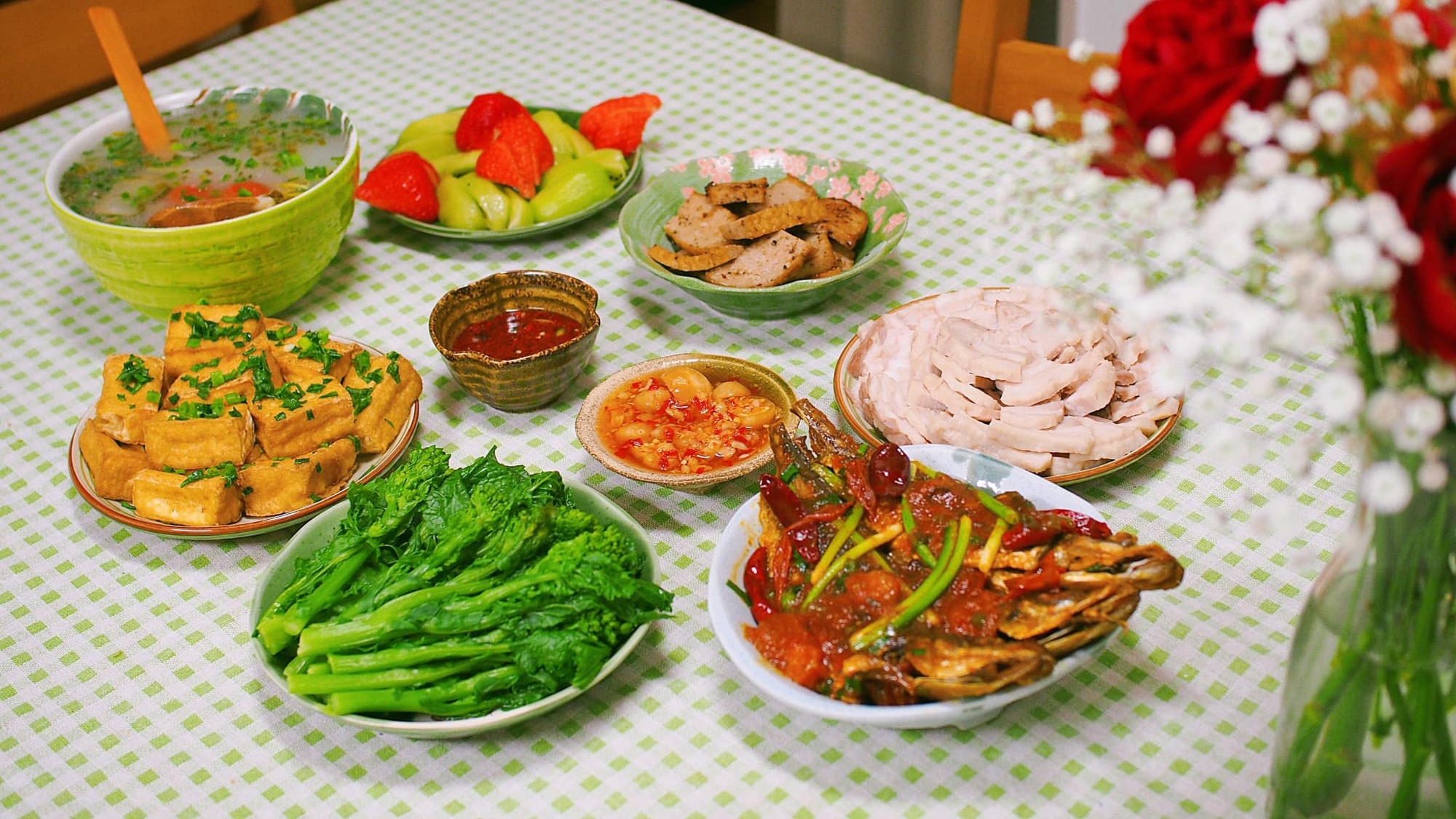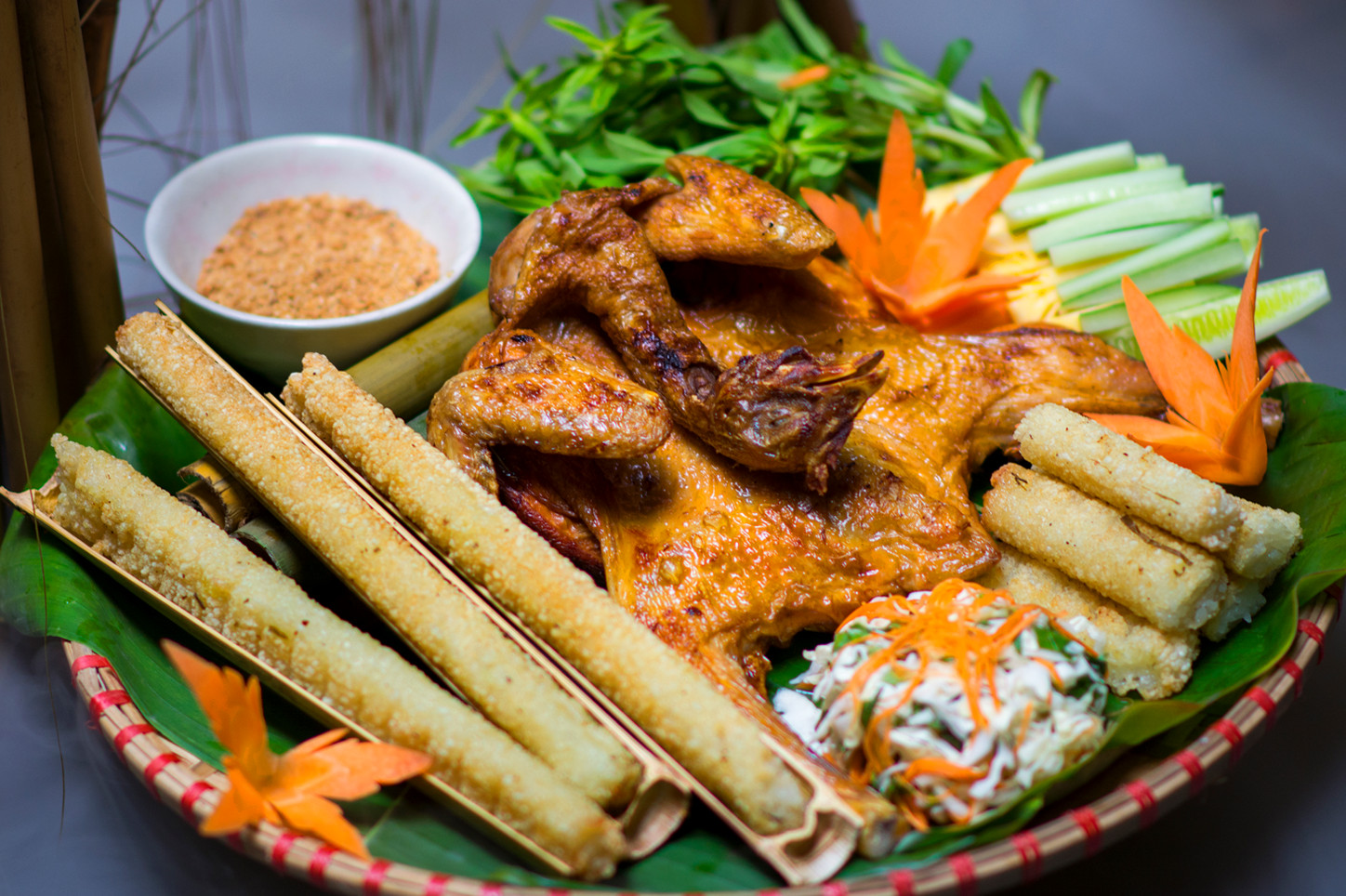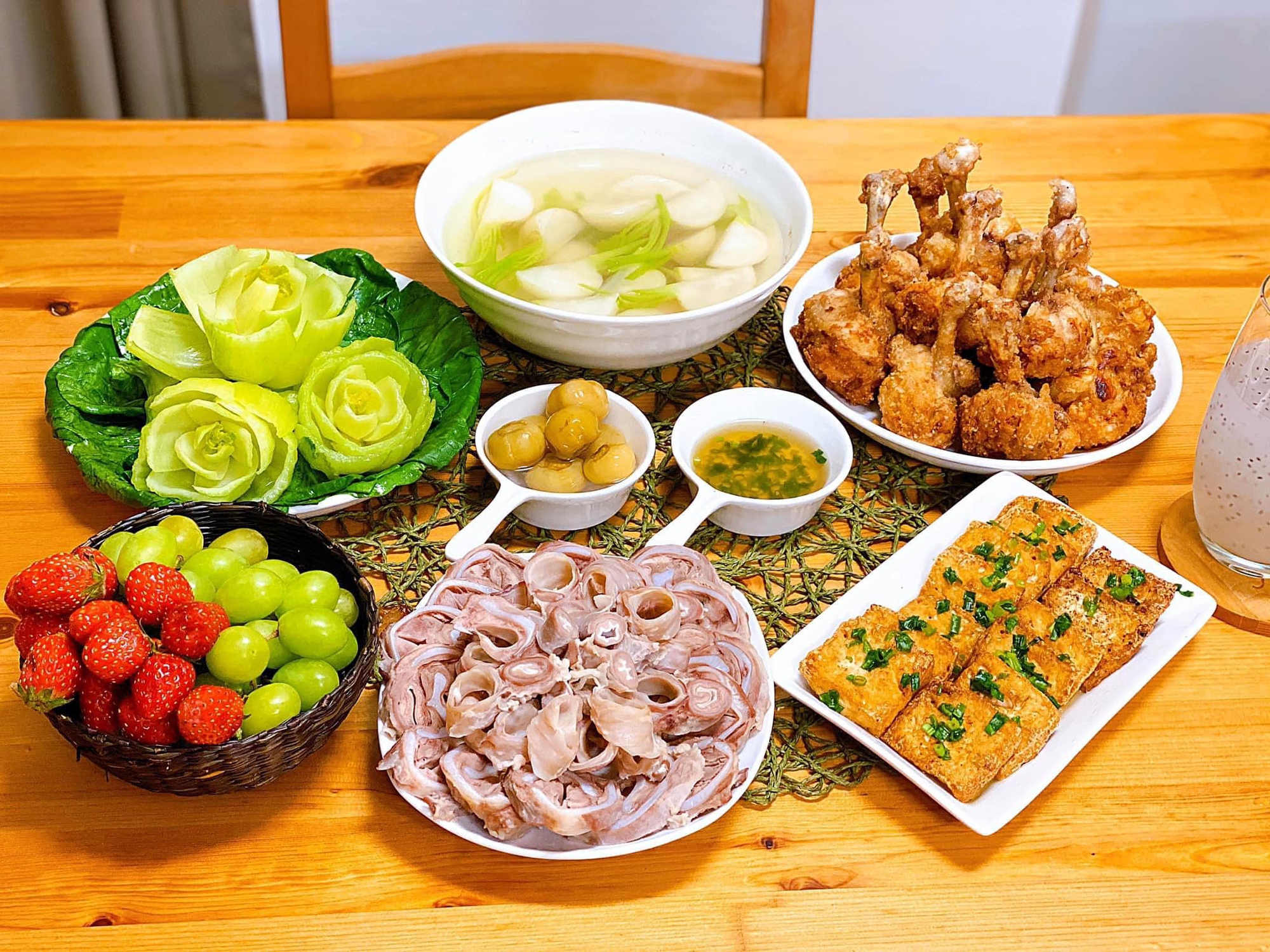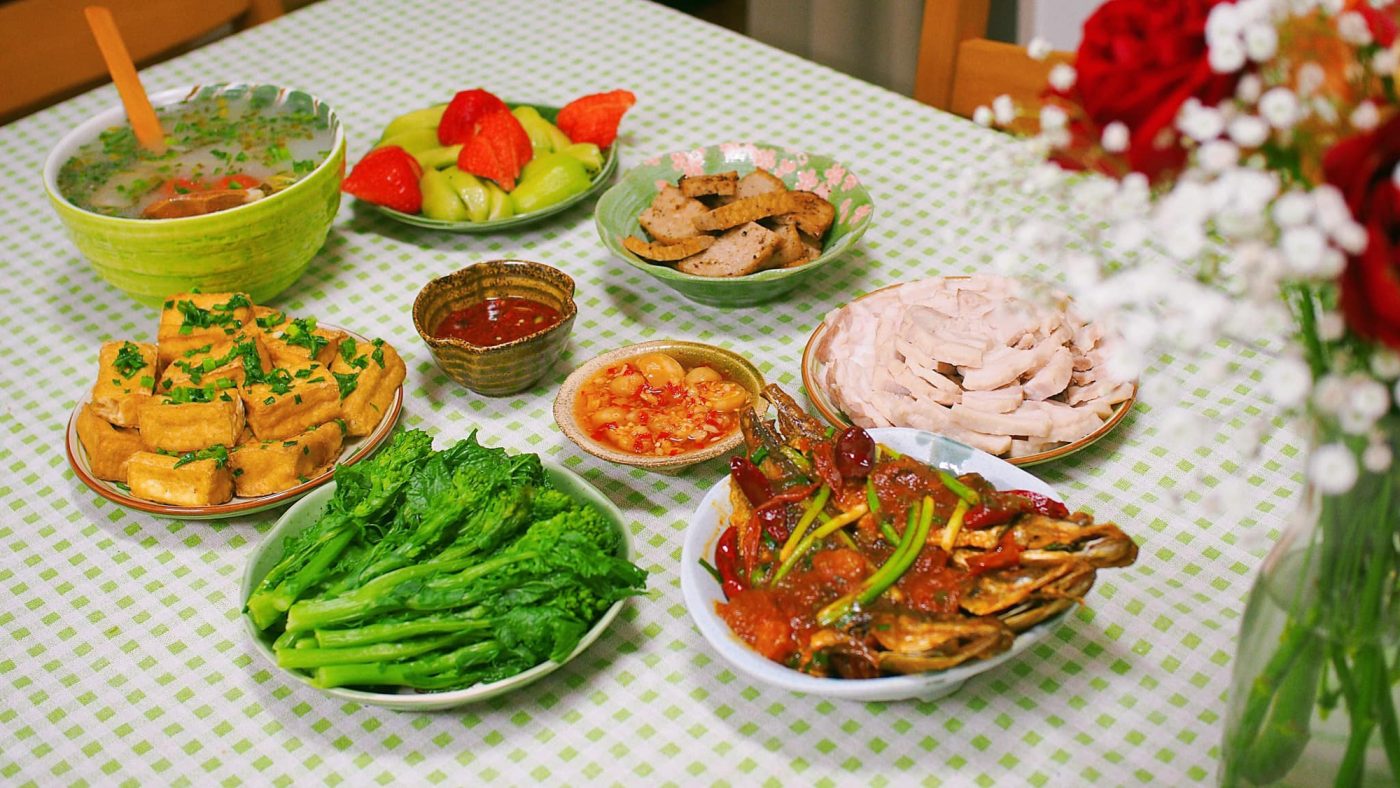No products in the cart.
Blog
Khám Phá ẩm Thực Nhật Bản: Từ Món ăn Gia đình đến đặc Sản địa Phương
[

Khám Phá Ẩm Thực Nhật Bản: Từ Món Ăn Gia Đình Đến Đặc Sản Địa Phương

Introduction:

Japan, a land of rising sun and ancient traditions, boasts a culinary landscape as rich and diverse as its history. From the simple elegance of a family meal to the complex artistry of haute cuisine, Japanese food offers a journey for the senses. This exploration delves into the heart of Japanese gastronomy, uncovering the secrets behind its iconic dishes, the regional variations, and the cultural significance embedded within each bite. Prepare to embark on a delicious adventure as we unravel the tapestry of Japanese culinary delights!
Món Ăn Gia Đình Nhật Bản: Sự Đơn Giản và Tinh Tế
Japanese home cooking emphasizes fresh, seasonal ingredients and simple preparation methods that allow the natural flavors to shine. The focus is on balance and harmony, reflecting the Japanese philosophy of wabi-sabi. Meals are often a carefully considered affair, incorporating a variety of textures and tastes.
- Cơm trắng (Plain Rice): The staple of the Japanese diet, providing the foundation for most meals. Its simple purity complements the other dishes.
- Miso Soup (味噌汁): A savory soup made with fermented soybean paste, often containing tofu, seaweed, and vegetables. A vital source of umami flavor.
- Tsukemono (漬物): Pickled vegetables, providing a refreshing and tangy counterpoint to the other dishes. They add a delightful acidic note to the meal.
- Shioyaki (塩焼き): Simple grilled fish seasoned only with salt, showcasing the natural flavor of the seafood. A testament to the quality of the ingredients.
- Nimono (煮物): Simmered dishes, often featuring vegetables and protein, cooked in a flavorful dashi broth. A comforting and nutritious addition to any meal.
- Tamagoyaki (卵焼き): Sweet rolled omelet, a delicate and subtly sweet side dish. The preparation requires skill and patience.
Sushi và Sashimi: Nghệ Thuật của Hải Sản Tươi Sống
Sushi and sashimi, arguably Japan’s most internationally recognized dishes, represent the pinnacle of fresh seafood preparation. The quality of the ingredients is paramount, with only the freshest catches being used. The art lies not only in the preparation but also in the presentation, transforming a simple dish into a work of art.
- Maguro (Tuna): One of the most popular sushi and sashimi choices, prized for its rich flavor and texture. Different cuts offer varying tastes and textures.
- Hamachi (Yellowtail): Known for its buttery texture and delicate flavor, this fish is a favorite among sushi aficionados. Often served as both sushi and sashimi.
- Unagi (Eel): Grilled eel, often served with a sweet and savory sauce, is a popular sushi and donburi ingredient. A classic Japanese delicacy.
- Sake (Salmon): A versatile fish, popular in both raw and cooked forms. Its rich flavor and vibrant color make it visually appealing.
- Ikura (Salmon Roe): Delicate, briny, and bursting with flavor, salmon roe adds a textural and flavorful element to sushi. A luxurious addition.
- Wasabi (わさび): A pungent horseradish-like condiment, essential for enhancing the flavor of sushi and sashimi. Its sharp taste cleanses the palate.
Ramen: Một Bát Súp Đầy Ấn Tượng
Ramen, a ubiquitous and beloved noodle soup, showcases the diversity of Japanese regional cuisines. Each region boasts its own unique variations, from the rich, pork-based tonkotsu ramen of Fukuoka to the lighter, soy-sauce based shoyu ramen of Tokyo. The broth is the soul of ramen, requiring hours of simmering to achieve the perfect depth of flavor.
- Tonkotsu Ramen (豚骨ラーメン): Rich and creamy pork bone broth, often topped with chashu pork, noodles, and scallions. A classic Fukuoka specialty.
- Shoyu Ramen (醤油ラーメン): Lighter soy sauce-based broth, often featuring a variety of toppings like bamboo shoots, nori seaweed, and marinated egg. A popular Tokyo style.
- Miso Ramen (味噌ラーメン): Fermented soybean paste-based broth, adding a savory and umami-rich flavor profile. Commonly found throughout Japan.
- Shio Ramen (塩ラーメン): A lighter salt-based broth, showcasing the purity of the ingredients. Often features simple toppings to allow the broth to shine.
- Tsukemen (つけ麺): Dipping ramen, where the noodles are served separately from the broth, allowing for a more intense flavor experience. A unique approach to ramen.
Tempura: Sự Hoàn Hảo Của Món Ăn Chiên Xù
Tempura, a method of deep-frying seafood and vegetables in a light batter, emphasizes the importance of precision and timing. The batter must be perfectly light and crispy, allowing the ingredients’ natural flavors to shine through. The result is a delicate balance of crispy texture and juicy interior.
- Ebi Tempura (海老天ぷら): Deep-fried shrimp, often served with a light dipping sauce. A classic and popular choice.
- Kakiage (かき揚げ): Mixed vegetable tempura, offering a variety of textures and flavors. A more substantial option.
- Nasu Tempura (茄子天ぷら): Deep-fried eggplant, showcasing the versatility of tempura. Its soft texture complements the crispy batter.
- Sweet Potato Tempura (さつまいも天ぷら): Sweet and subtly spiced, showcasing the seasonal availability of Japanese ingredients.
- Ten-tsuyu (天つゆ): A dipping sauce specifically designed for tempura, often combining soy sauce, mirin, and dashi. A vital part of the tempura experience.
Wagashi: Món Tráng Miệng Truyền Thống
Wagashi, traditional Japanese sweets, showcases the artistic side of Japanese cuisine. These confections are not just delicious; they are also beautiful works of art, often incorporating seasonal ingredients and reflecting the natural beauty of the Japanese landscape. The flavors are subtle and delicate, emphasizing natural sweetness and unique textures.
- Mochi (餅): Chewy rice cakes, often filled with sweet bean paste or other flavors. A staple of Japanese celebrations.
- Daifuku (大福): Mochi filled with sweet bean paste, often flavored with seasonal fruits. A classic Japanese confection.
- Dorayaki (どら焼き): Two small pancakes filled with sweet bean paste. A popular and widely accessible treat.
- Manju (饅頭): Steamed buns filled with sweet bean paste, often shaped and decorated to resemble flowers or other natural elements. A symbol of Japanese aesthetic principles.
- Yokan (羊羹): A jellied sweet bean paste, often flavored with various ingredients. A luxurious and sophisticated wagashi option.
Bảng So Sánh Các Món Ăn:
| Món Ăn | Đặc Điểm Chính | Thành Phần Chính | Phong Cách Nấu |
|---|---|---|---|
| Món Ăn Gia Đình | Đơn giản, tươi ngon, cân bằng | Cơm, súp miso, tsukemono, cá nướng, rau củ | Nấu, hấp, nướng |
| Sushi & Sashimi | Hải sản tươi sống, trình bày đẹp mắt | Cá, hải sản tươi sống | Sashimi: sống; Sushi: cơm, cá, gia vị |
| Ramen | Nước dùng đậm đà, đa dạng khu vực | Mì, nước dùng, thịt, rau | Nấu nước dùng đậm đà, kết hợp các nguyên liệu |
| Tempura | Vàng giòn, tươi ngon | Hải sản, rau củ, bột chiên xù | Chiên giòn |
| Wagashi | Món tráng miệng, tinh tế, nghệ thuật | Đậu ngọt, mochi, các nguyên liệu tự nhiên | Nấu, làm bánh |
Conclusion:
Exploring Japanese cuisine is more than just indulging in delicious food; it’s a cultural immersion. Each dish tells a story, reflecting the country’s history, philosophy, and appreciation for natural beauty and simplicity. From the comforting familiarity of a home-cooked meal to the breathtaking artistry of sushi and wagashi, Japanese food offers an unparalleled sensory experience. This journey through its diverse culinary landscape has only scratched the surface. The best way to truly understand the depth and richness of Japanese gastronomy is to experience it firsthand—so start planning your culinary adventure today!
Keyword Tags: Japanese Food, Japanese Cuisine, Home-style Japanese Food, Sushi, Ramen
]


Bài viết hay quá! Mình đọc mà thấy thèm các món ăn Nhật luôn. Cảm ơn tác giả nha!
Tuyệt vời! Nhiều thông tin bổ ích, hình ảnh đẹp nữa. Đọc xong mình muốn lên đường khám phá ẩm thực Nhật Bản ngay và luôn!
Bài viết thiếu nhiều thông tin quan trọng về giá cả và địa điểm cụ thể. Đọc xong vẫn chưa biết ăn ở đâu cho tốt.
Mình thấy bài viết hơi lan man, không tập trung vào chủ đề chính lắm. Cần chỉnh sửa lại cho chặt chẽ hơn.
Thêm thông tin về lịch sử và văn hóa ẩm thực Nhật Bản nữa thì bài viết sẽ tuyệt vời hơn đó!
Tôi không đồng ý với quan điểm của tác giả về sushi. Theo tôi, sushi ngon nhất vẫn là ở Nhật Bản chứ không phải ở đâu khác!
Ôi, đọc bài viết mà tưởng mình đang ở Nhật Bản luôn ấy. Tuyệt vời! Nhưng mà hình như tác giả hơi bị thiên vị món Ramen thì phải?
Bài viết hay đấy, nhưng mà hình như tác giả cố tình làm cho nó dài dòng ra để câu view quá rồi.
Haha, đọc bài này mà mình cười bể bụng luôn. Tác giả hài hước quá!
Bài viết tổng quan khá tốt, tuy nhiên cần thêm thông tin về các món ăn chay cho người ăn kiêng.
Hình ảnh minh họa đẹp quá trời luôn! Nhưng mà nội dung bài viết có chỗ hơi khó hiểu.
Tôi thấy phần giới thiệu về các món ăn địa phương chưa đủ chi tiết. Cần bổ sung thêm nhiều thông tin hơn nữa.
Bài viết này hay ghê, mình đọc mà thèm đồ ăn Nhật quá trời luôn! Nhưng mà sao ít hình ảnh quá vậy?
Rất bổ ích! Tuy nhiên, tôi nghĩ tác giả nên thêm phần hướng dẫn cách làm một số món ăn đơn giản.
Chán quá đi! Bài viết như kiểu chỉ nói chung chung, không có gì đặc sắc cả. Đọc xong vẫn không biết gì thêm về ẩm thực Nhật Bản cả.